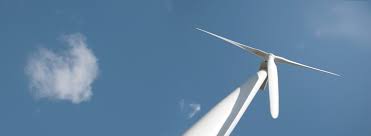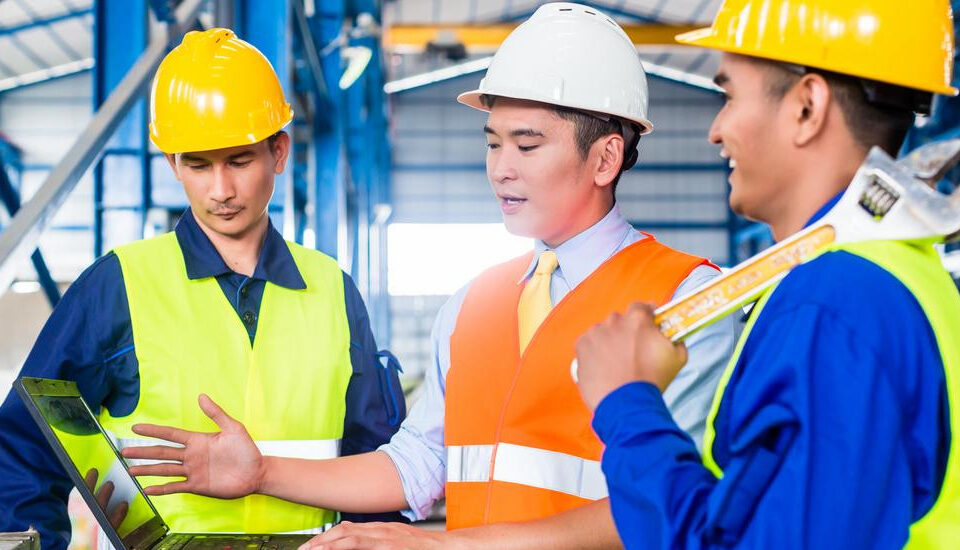Understanding the Basics of Wind Turbine Safety Audits

How to Conduct a Thorough Safety Audit for Solar Power Plant Safety Compliance
May 18, 2023
Navigating the Hazards of Electrical Fires: An Arc Fire Flash Assessment Guide
May 19, 2023Understanding the Basics of Wind Turbine Safety Audits
In this article, we will delve into the critical importance of conducting proper safety audit for wind turbines. With the increasing popularity of alternative energy sources, more and more wind turbines are being installed, making it imperative to ensure their safety for both workers and the environment. Readers can expect to gain a thorough understanding of wind turbine safety protocols, the reasons for conducting audits, and what should be expected during the inspection process. By the end of this article, readers can feel confident in the knowledge gained and their ability to prioritize safety when it comes to wind energy.
Importance of Wind Turbine Safety Audits
Wind turbines are an essential source of renewable energy production, and although they have numerous benefits, they also pose safety risks. Therefore, it is crucial to conduct regular wind turbine safety audits to ensure that all components are functioning correctly and meeting safety standards. The importance of wind turbine safety audits cannot be overstated. These audits serve as a preventative measure in identifying potential hazards before accidents occur and help to maintain the longevity of the equipment. Without proper maintenance, wind turbines can suffer from mechanical failures leading to costly repairs or replacement. Regular audits help track the condition of critical components and prevent damage due to improper operating procedures or environmental factors.
Additionally, wind turbine safety audits promote a culture of safety among industry workers. By implementing strict protocols for the installation, maintenance, and operation of these systems, workers become more aware of potential hazards and how to avoid them. This results in a safer work environment for everyone involved while contributing positively towards the growth of renewable energy production in the long run.
Understanding Wind Turbine Components
The wind turbine is a complex machine that operates on a simple principle: converting wind energy into electrical power. Understanding the various components of a wind turbine is essential for ensuring proper safety measures and maintenance protocols are in place. The three main components of a wind turbine are the rotor, generator, and tower. The rotor consists of blades that rotate when they’re hit by the wind, generating kinetic energy. The generator converts this kinetic energy into electrical power that can be used by homes and businesses. The tower provides support for the rotor and generator, anchoring them to the ground.
Other key components of a wind turbine include the nacelle, hub, gearbox, brakes, yaw system, and power electronics. Each component plays a crucial role in ensuring safe and efficient operation of the wind turbine. Proper maintenance and inspection of these components is vital to prevent potential hazards such as overheating or blade failure.
Overall, understanding the various components of a wind turbine is essential for conducting a thorough safety audit and implementing effective maintenance protocols. By ensuring all components are in good working order, we can maximize efficiency while minimizing risks associated with improper operation or maintenance.
Importance of Proper Maintenance and Inspection
Wind turbines are complex machines that require proper maintenance and inspection to ensure safety and efficiency. Regular maintenance can help prevent costly breakdowns and extend the lifespan of the turbine. Inspection is also critical to identify any potential issues and address them before they become major problems. Maintenance should be performed in accordance with the manufacturer’s recommendations, and any issues that arise should be addressed promptly. Common maintenance tasks include cleaning, lubrication, and replacement of worn or damaged parts. Inspections should be conducted at regular intervals to ensure that all components are in good condition.
Proper maintenance and inspection not only ensure safety but also improve the performance of wind turbines. A well-maintained turbine will operate more efficiently, leading to increased power output and lower operating costs. In addition, proper maintenance can help reduce downtime, which means a higher return on investment for turbine owners. Therefore, it is crucial to prioritize routine inspections as well as regular maintenance for optimal results.
Conducting a Proper Wind Turbine Safety Audit
Conducting a Proper Wind Turbine Safety Audit: A wind turbine safety audit is the process of reviewing the condition and safety protocols in place for a wind turbine. In order to conduct a proper audit, it is important to have a good understanding of all the various components that make up the turbine. This includes knowledge of electrical systems, hydraulic systems, mechanical systems, and control systems.
During the audit, it is important to ensure that all standard operating procedures are being followed. This includes conducting regular maintenance checks on both electrical and mechanical components, as well as making sure that all safety features are in place and functioning properly.
In addition to addressing any immediate concerns during the audit, it is also important to identify areas for improvement. This may include recommendations for additional training or updated safety protocols. By conducting regular safety audits, wind farms can ensure that their turbines remain safe and functional for years to come.
Preparation for a Successful Wind Turbine Safety Audit
Preparation for a Successful Wind Turbine Safety Audit:Before conducting a wind turbine safety audit, proper preparation is crucial to ensure the success of the audit. The first step in preparation is to review all documentation and records related to the wind turbine. This includes maintenance records, inspection reports, and any other relevant documents. This will help identify any potential issues or areas that require additional attention during the audit.
Next, it’s important to ensure all necessary tools and equipment are available for the audit. This includes personal protective equipment (PPE), testing equipment such as multimeters and infrared cameras, and any special tools required for accessing components of the turbine.
The final step in preparation is to schedule sufficient time for the audit and coordinate with relevant personnel such as maintenance technicians and site managers. By properly preparing for a wind turbine safety audit, you can ensure all necessary steps are taken to identify potential hazards and improve overall safety at your wind energy facility.
Understanding and Implementing Safety Protocols
Wind turbine safety protocols are critical to ensure that the equipment is functioning as expected, and that workers are safe while completing their tasks. Implementing safety protocols requires a comprehensive approach that takes into account all aspects of the operation, from maintenance and inspection to emergency response plans. The first step in implementing safety protocols is to assess the hazards associated with each phase of the wind turbine operation. This involves identifying potential risks such as falls, electrical hazards, or equipment failure. Once these are identified, appropriate measures can be put in place to mitigate them.
Next, a set of safety procedures should be developed which guides workers on what to do in various situations, including emergencies. These procedures should cover everything from how to handle equipment malfunctions to what steps should be taken if there is an injury on site.
Finally, it’s important not only to develop these protocols but also to communicate them effectively throughout the organization. Workers need clear instructions and training on how to implement these procedures during their day-to-day activities. In addition, regular reviews should be conducted periodically so that any updates or modifications can be made as necessary.
Overall, implementing effective wind turbine safety protocols requires planning, attention to detail and ongoing commitment from all stakeholders involved in the project. By prioritizing safety through effective planning and communication strategies we can ensure that our staff returns home safely at the end of each day.
Addressing Potential Hazards
Addressing Potential Hazards:Wind turbines are complex machines that work in a variety of environments, and as such, they can pose various hazards to personnel. It is important to identify potential hazards and mitigate them as much as possible to ensure the safety of workers on the wind turbine site.
One potential hazard is blade failure, which can occur due to material fatigue or wear and tear. To mitigate this risk, all blades should be regularly inspected for cracks or damage and repaired or replaced as necessary.
Another potential hazard is electrical shock or electrocution. Wind turbines generate a significant amount of electricity, so it is critical that proper electrical safety protocols are in place and followed at all times. This includes ensuring that all equipment is properly grounded and locked out before any maintenance work is performed.
Finally, fire can also pose a significant risk at wind turbine sites. Due to the height of the turbines and their remote locations, fires can quickly become uncontrollable if not appropriately addressed. Fire suppression systems should be installed, tested regularly, and maintained in good working order. In addition, all personnel should receive appropriate training on how to use fire extinguishers correctly.
By identifying potential hazards associated with wind turbine operation proactively and taking steps to address them appropriately, we can help ensure that workers on these sites remain safe while generating clean energy for our communities.
Identifying Areas for Improvement
Identifying Areas for ImprovementOnce the potential hazards have been identified during a wind turbine safety audit, it is essential to determine areas where improvements can be made. This analysis should include an evaluation of existing safety protocols, inspection processes, and maintenance procedures. Identifying areas that require improvement is critical to ensuring the long-term safety of both workers and the environment.
One aspect of identifying potential areas for improvement is to examine past incidents or accidents that have occurred at the site. Understanding what caused these events will provide valuable insight into how to improve safety moving forward. In addition, identifying areas where workers may not be following proper protocols can also lead to improvements in training programs.
Another method for identifying areas for improvement is by analyzing data gathered during inspections and maintenance checks. By looking at trends, patterns, or recurring issues, it may be possible to identify particular components or systems that require additional attention or upgrading.
Overall, identifying specific areas for improvement is a crucial step in creating a comprehensive wind turbine safety program. By continually assessing and improving upon these key elements, wind energy companies can help ensure the ongoing success and growth of this important industry.
Concluding the Wind Turbine Safety Audit and Follow Up
Concluding the Wind Turbine Safety Audit and Follow Up:After conducting the wind turbine safety audit, it is important to take action on identified areas of improvement. This should involve developing a comprehensive plan that outlines how all identified issues will be addressed. The plan should also include timelines and responsibilities for each task.
Additionally, regular follow-up audits should be conducted to ensure that all identified issues have been resolved and that safety protocols are being followed. This will help to maintain a safe working environment for all personnel involved with the wind turbine operations.
In conclusion, implementing proper safety protocols and conducting regular safety audits is vital to ensuring safe wind turbine operations. By taking a proactive approach, potential hazards can be identified and addressed before they turn into serious incidents. It is important to prioritize safety in order to ensure the well-being of all involved and maintain the long-term success of wind energy production.
Our customers in Wind Energy are Torrent Energy Airtouch Solar Contact us for
Safety Trainings at Wind Turbine Power Plant
Behavior Based Safety Safety Trainings
TSM TheSafetyMaster® Private Limited
Unit No 221-451-452, SPL1/J, 2nd Floor, Sunsquare Plaza Complex, RIICO Chowk, Bhiwadi 301019, Rajasthan, India
Phone: +91 1493 22 0093/+91-124-4881109
Mobile: +91 7665231743/9413882016
Email: info@thesafetymaster.com



